6 Bread types
In this chapter you will learn about different bread types and their advantages and disadvantages. You can also find very simple recipes for flatbread and pan loaf. The former is probably the most accessible, least effort type of bread you can make, while the latter is a little more involved. Free standing bread has its own chapter, due to its increased complexity.
6.1 Introduction🔗
In this section we classify bread by its baking techniques. The appearance and taste will of course be different, but you can get excellent bread with each of them. Some breads will require investment and technique, as depicted in Table 6.1. Flatbread is probably the most accessible, least effort type of bread you can make. If you are a busy person and/or don’t have an oven, this might be exactly the type of bread you should consider.
|
Type of bread
|
|||
| Flat | Loaf pan | Free standing | |
| Cooking method | Pan, fire, barbecue | Oven | Oven |
| Working time | 3 min. | 5 min. | 60 min. |
| Flour types | All | All | Gluten flours |
| Difficulty | Very easy | Easy | Difficult |
| Cost | Low | Medium | High |
6.2 Flatbread🔗
Flatbread is probably the simplest sourdough bread to make. To make a flatbread no oven is required; all you need is a stove.
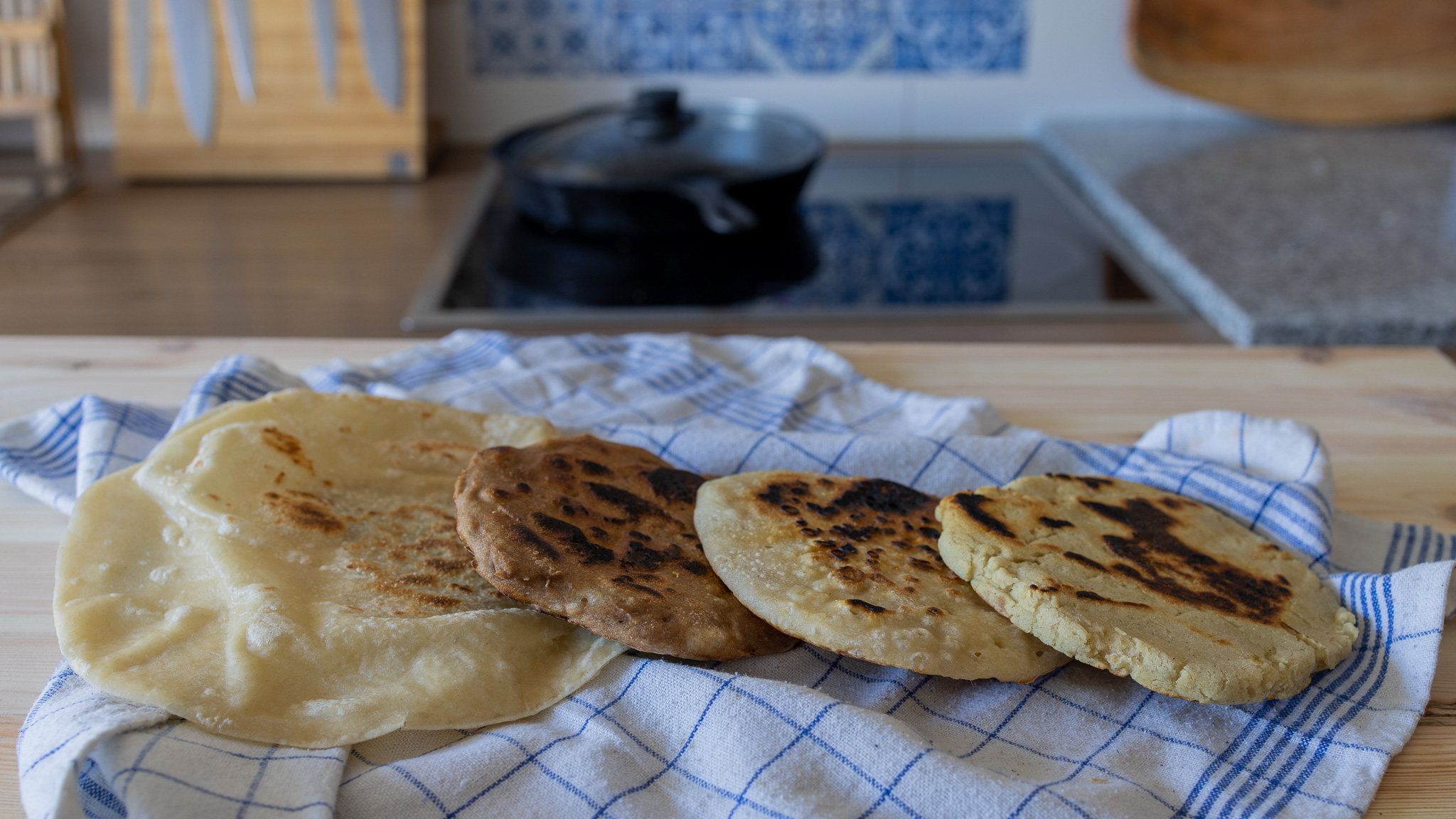
This type of bread is super simple to make as you can skip a lot of the technique that is normally required to make wheat doughs. The flatbread can be made with all kinds of flours. You can even use flour without gluten, such as corn or rice flour, to make the dough. To make the flatbread a little more fluffy, you can use a little bit of wheat flour. The developing gluten will trap the gases. During baking, these gases will inflate the dough.
Another trick to improve the texture of the flatbread is to make a very wet dough. A lot of the water will evaporate during the baking process and thus make the bread fluffier. If your water content is very high, it will produce a pancake-like consistency, as you can see in Table 6.2
| Flat breads | Pancakes | |
| Flour | 100 g | 100 g |
| Water | up to 100 g (100 %) | 300 g (300 %) |
| Sourdough starter | 5–20 g (5–20 %) | 5–20 g (5–20 %) |
| Salt | 2 g (2 %) | 2 g (2 %) |
| Bake when? | Dough increased 50 % in size | Bubbles visible on surface |
For a full recipe including the process of making such a flatbread, refer to Subsection 6.2.2
6.2.1 Flatbread framework🔗
As explained above, if you are just getting started, making a flatbread is the easiest way to start making great bread at home. With just a few steps, you can stop buying bread forever. This works with any flour, including gluten-free options.
This is my go-to recipe that I use to make bread whenever I have little time or when I am abroad. You can choose between two options:
- A flatbread similar to a roti or naan bread
- Sourdough pancakes.
To get started prepare your sourdough starter. If it has not been used for a very long time, consider giving it another feed. To do so, simply take 1 g of your existing sourdough starter and feed it with 5 g of flour and 5 g of water. If you do this in the morning, your sourdough starter will be ready in the evening. The warmer it is, the sooner it will be ready, consider using warm water if it is very cold where you live.
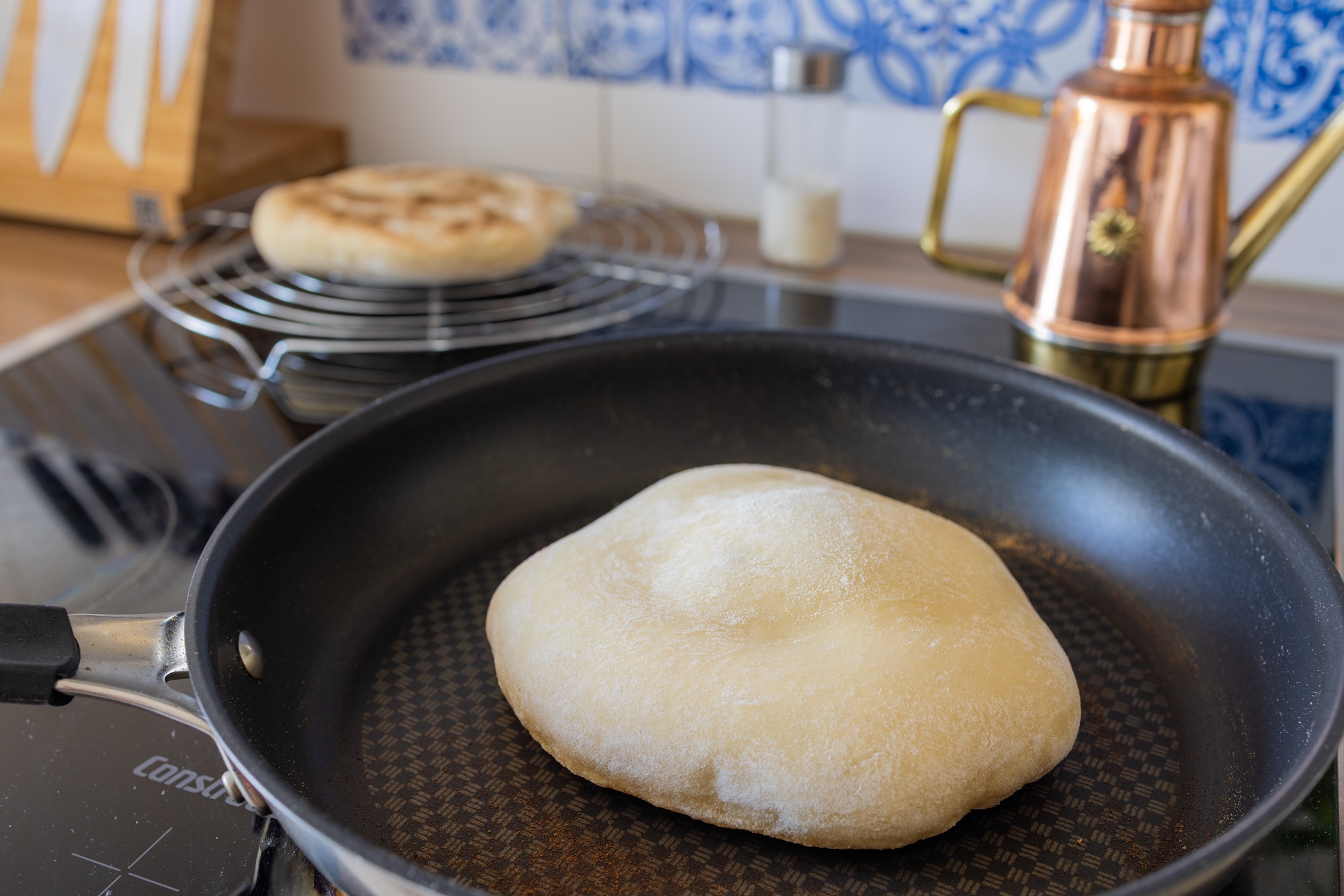
This way you should have around 11 g of sourdough ready in the evening. You will have the perfect quantity to make a dough for one person. In case you want to make more bread, simply multiply the quantities shown in Table 6.2.
Then in the evening simply mix the ingredients as shown in the table. Your dough is going to be ready in the morning. It’s typically ready after 6–12 hours. If you use more sourdough starter it will be ready faster, conversely it will take longer if you use less. Try to aim for a fermentation time of 8–12 hours as by using your dough too soon, the flavor might not be as good. By using your dough later it might become a little more sour. The best option is to experiment and see what you personally like the most.
After mixing the ingredients together cover the container, this prevents the dough from drying out and makes sure no fruit flies get access. A transparent container will be helpful when getting started. You can observe the dough more easily and see when it is ready.
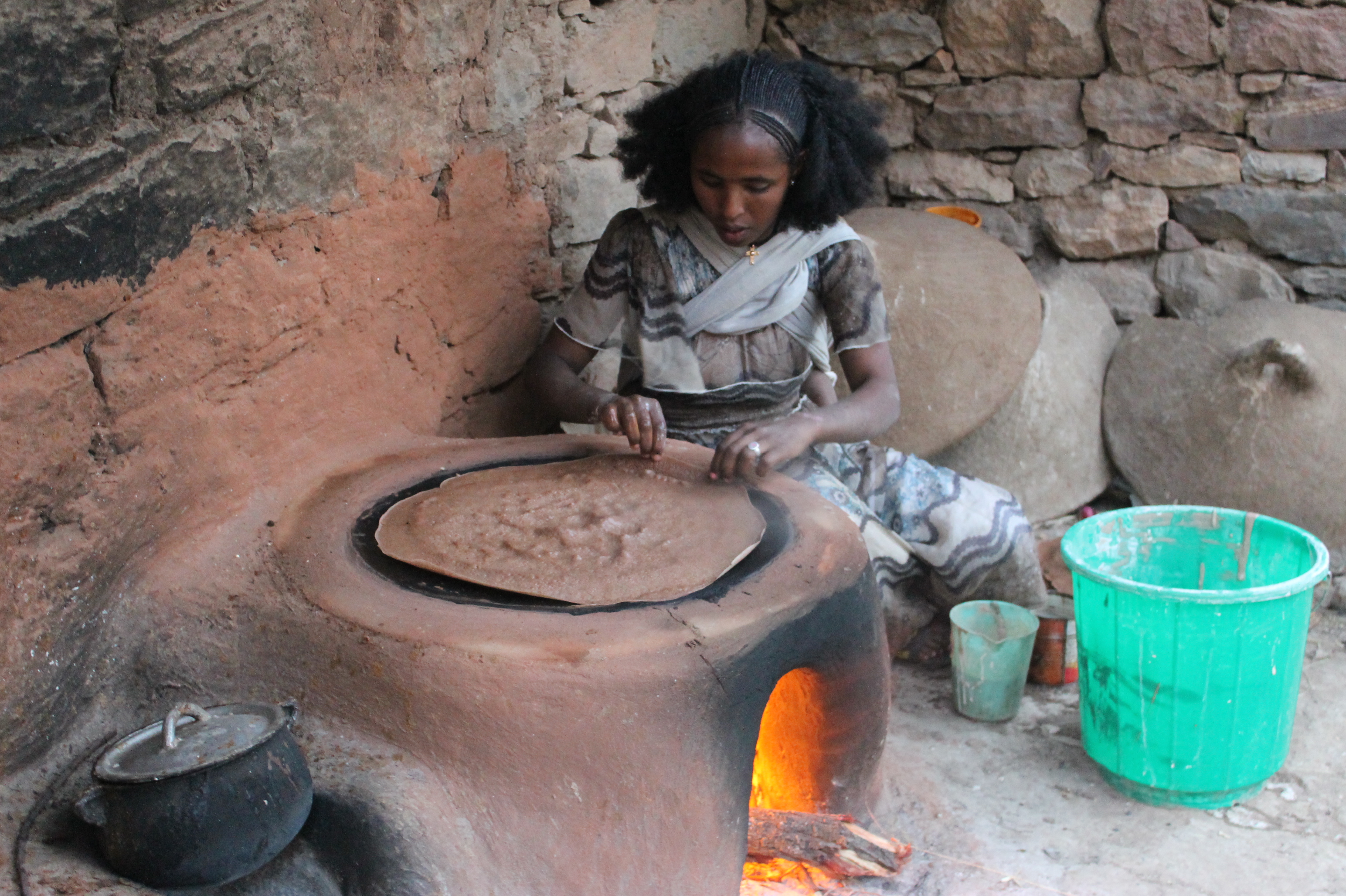
If you used the flatbread option with less water, look at the size increase of your dough. It should have increased at least 50 % in size. Also look out for bubbles on the sides of your container.
When using the pancake recipe, look out for bubbles on the surface of your dough. In both cases use your nose to check the scent of your dough. Depending on your sourdough starter’s microbiome your dough will have dairy, fruity, alcoholic notes or vinegary, acetic notes. Relying on the smell of your dough is the best way to judge whether your dough is ready or not. Timings are not reliable as they depend on your starter and the temperature. If your dough is ready too soon, you can now move it directly to the fridge and bake it at a later, more convenient time. The low temperature will halt the fermentation process1 and your dough will last for several days. The longer you wait, the more sour the bread is going to be. The fridge is a great option in case you want to take the dough with you when visiting friends. People are going to love you for the freshly baked flatbreads or pancakes. If you dare, you can also taste a little bit of your raw uncooked dough. It is likely going to taste relatively sour. I do this frequently to better evaluate the state of my doughs.
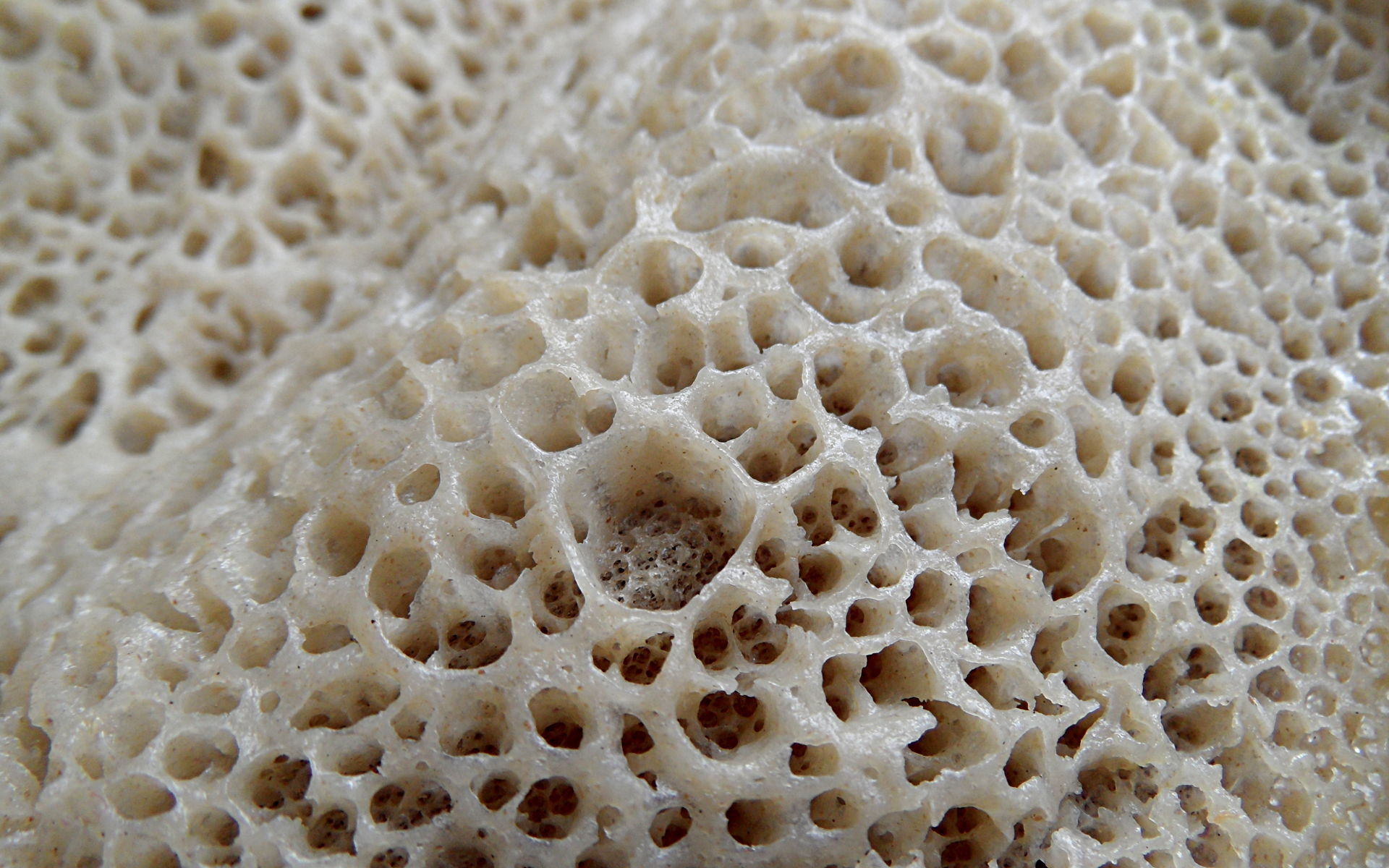
If you are feeling lazy or don’t have time, you could also use older sourdough starter to make the dough directly without any prior starter feedings. Your sourdough starter is going to regrow inside your dough. Remember that the final bread might be a bit more on the sour side as the balance of yeast to bacteria could be off. In the Table 6.2 I recommended using around 5 % to 20 % of sourdough starter based on the flour to make the dough. If you were to follow this approach, just use around 1 % and make the dough directly. The dough is probably going to be ready 24 hours later, depending on the temperature.
If you want to make sweet pancakes, add some sugar and optional eggs to your dough now. A good quantity of eggs is around one egg per 100 g of flour. Stir your dough a little bit and it will be ready to be used. You’ll have delicious sweet savory pancakes, the perfect combination. By adding the sugar now, you make sure that the microbes don’t have enough time to fully ferment it. If you had added the sugar earlier, no sweet flavor would be left 12 hours later.
To bake your dough heat your stove to medium temperature. Add a little bit of oil to the pan. This helps with heat distribution and ensures even cooking. With a spatula or a spoon place your dough in the pan. If your dough was sitting in the fridge, bake it directly. There is no need to wait for your dough to come to room temperature. If you have a lid, place it on your pan. The lid helps to cook your dough from the top. The evaporating water will circulate and heat up the dough’s surface. When making a flatbread, make the dough around 1 cm thick. When using the pancake option, opt for around 0.1 cm to 0.5 cm depending on what you like.
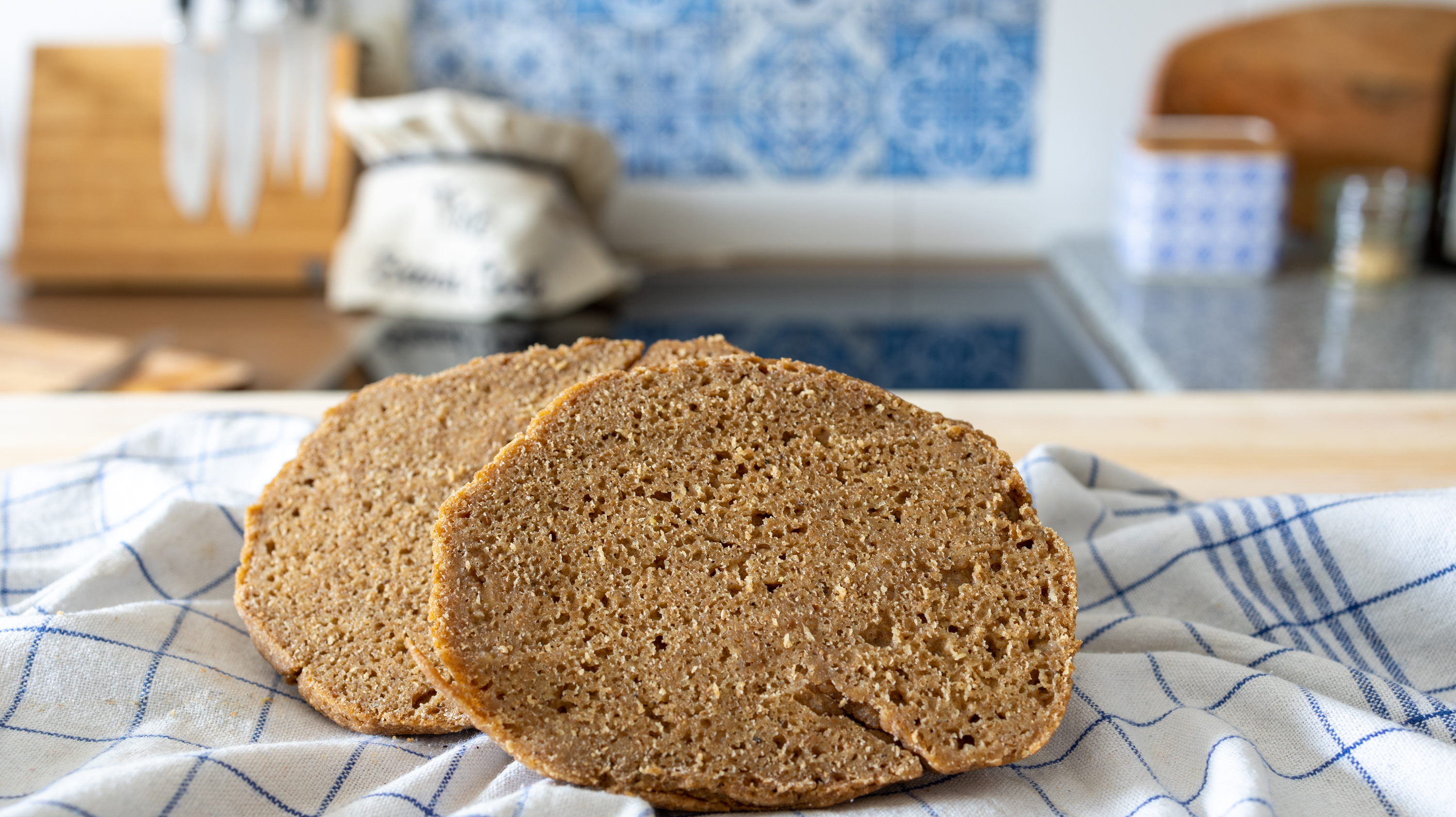
After 2–4 minutes flip over the pancake or flatbread. Bake it for the same time from the other side. Depending on what you like, you can wait a little longer to allow the bread to become a bit charred. The longer you bake your bread, the more of the acidity is going to evaporate. If your dough is a bit more on the sour side, you can use this trick to balance out the acidity. This really depends on which flavor you are looking for.
When making a flatbread I recommend wrapping the baked flatbreads in a kitchen towel. This way more of the evaporating humidity stays inside of your bread, making sure your flatbreads stay nice and fluffy for a longer period after the bake. A similar strategy is used when making corn tortillas.
You can safely store the baked flatbreads or pancakes in your fridge for weeks. When storing make sure to store them in an airtight plastic bag so that they do not dry out. If they dry out, spray them with some water and toast them. They will be almost as good as when they were freshly baked.
Keep a little bit of your unbaked dough. You can use it to make the next batch of bread or pancakes for the next day. If you want to bake a few days later, add a little bit of water and flour and store this mixture in your fridge for as long as you like.2
6.2.2 Simple flatbread recipe🔗
By following the steps outlined in this section, you’ll be introduced to a versatile bread that’s perfect for a myriad of culinary applications. Whether you’re scooping up a savory dip, wrapping a flavorful filling, or simply enjoying a piece with a drizzle of olive oil, these flatbreads are sure to impress.
Ingredients
| 400 g | (100 %) | Flour (wheat, rye, corn, whatever you have at hand) |
| 320 g | (80 %) | Water, preferably at room temperature |
| 80 g | (20 %) | Active sourdough starter |
| 8 g | (2 %) | Salt |
Instructions
- Prepare the dough
-
In a large mixing bowl, combine the flour and water. Mix until you have a shaggy dough with no dry spots.
Add the sourdough starter and salt to the mixture. Incorporate them thoroughly until you achieve a smooth and homogenized dough.
- Fermentation:
-
Cover the bowl with a lid or plastic wrap. Allow the dough to rest and ferment until it has increased by at least 50 % in size. Depending on the temperature and activity of your starter, this can take anywhere from 4 to 24 hours.
- Cooking preparation:
-
Once the dough has risen, heat a pan over medium heat. Lightly oil the pan, ensuring to wipe away any excess oil with a paper towel.
- Shaping and cooking:
-
With a ladle or your hands, scoop out a portion of the dough and place it onto the hot pan, spreading it gently like a pancake.
Cover the pan with a lid. This traps the steam and ensures even cooking from the top, allowing for easier flipping later.
After about 5 minutes, or when the bottom of the flatbread has a golden-brown crust, carefully flip it using a spatula.
Adjusting cook time. If the flatbread appears too dark, remember to reduce the cooking time slightly for the next one. Conversely, if it’s too pale, allow it to cook a bit longer before flipping.
Cook the flipped side for an additional 5 minutes or until it’s also golden brown.
- Storing:
-
Once cooked, remove the flatbread from the pan and place it on a kitchen towel. Wrapping the breads in the towel will help retain their softness and prevent them from becoming overly crisp. Repeat the cooking process for the remaining dough.
- Serving suggestion:
-
Enjoy your sourdough flatbreads warm, paired with your favorite dips, spreads, or as a side to any meal.
6.3 Loaf pan bread🔗
Loaf pan bread is made using the help of a special loaf pan or loaf tin. The edges of the pan provide additional support for the dough to rise. Making a bread using a loaf pan requires an oven.
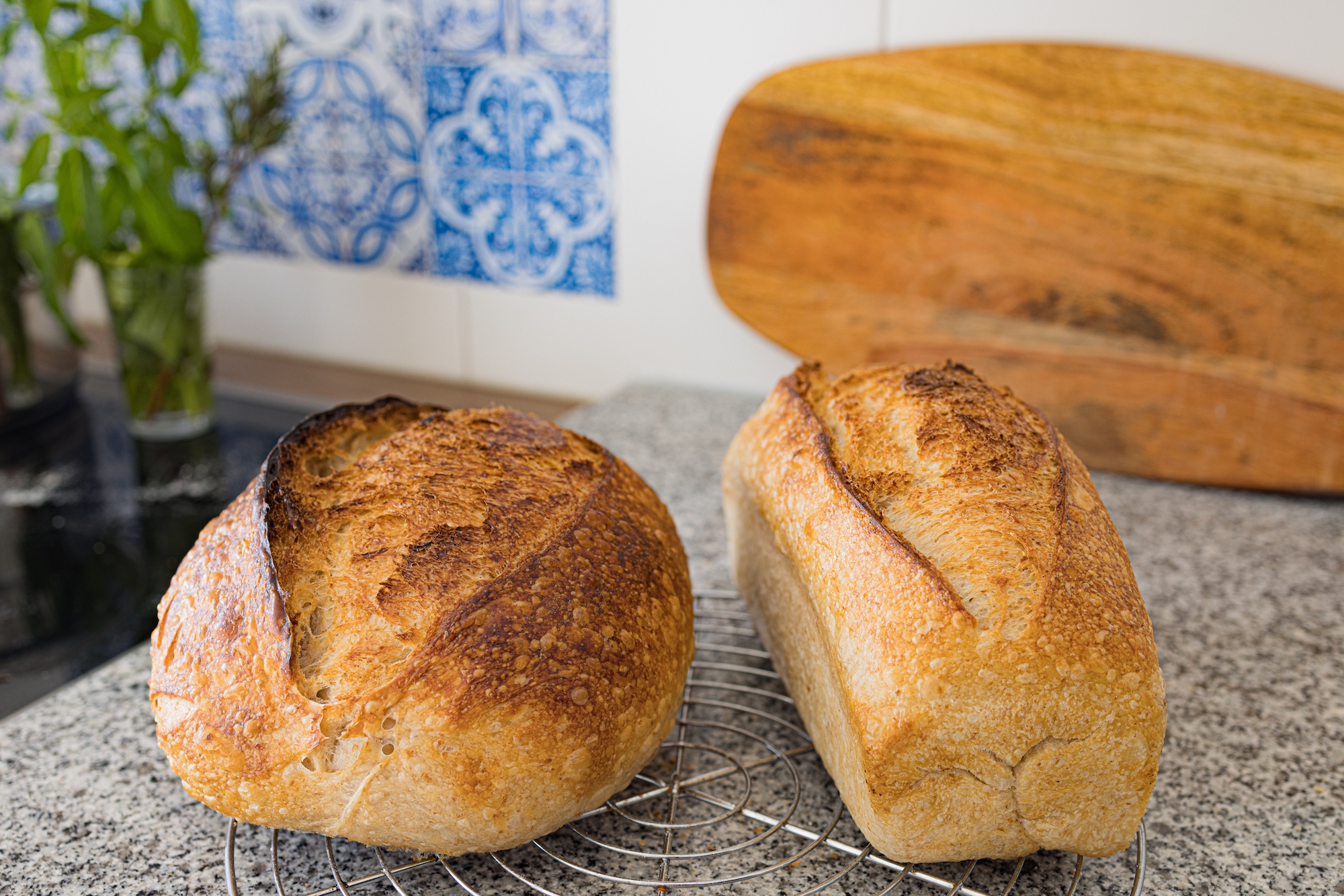
After mixing your dough, you can place it directly into the loaf pan. This makes the whole process simpler since you can skip steps such as shaping the dough.
To make a great loaf pan bread with little work:
- Mix the ingredients of your dough (gluten free works too)
- Place into the loaf pan
- Wait until your dough has roughly doubled in size
- Bake in a non pre-heated oven for around 30–50 minutes
Knowing the exact baking time is sometimes a little challenging as it might be that the outside of your bread is cooked but the inside is still raw. The best way is to use a thermometer and measure the core temperature. At around 92 °C (197 °F) your dough is done. I generally bake loaf pan bread at around 200 °C (390 °F), which is a little less than my freestanding bread which I bake at 230 °C (445 °F). That’s because it takes a while for the dough to bake properly inside the loaf pan. The edges don’t heat up as quickly. Then the top part of the dough is properly cooked, while the inside isn’t yet. When baking make sure to use steam or simply place another equally sized loaf pan on top of your loaf pan. This way you simulate a Dutch oven. The dough’s evaporating moisture will stay inside.
A good trick to make excellent loaf pan bread is to make a very sticky dough. You can opt for a hydration of 90 % to 100 %, almost resembling a default sourdough starter. Just like with flatbread, the high humidity helps to make a more airy, fluffy crumb. The bread will also be a bit chewier. This type of bread made with rye is my family’s favorite style of bread. The hearty rye flavor paired with the sticky consistency really makes an excellent sandwich bread.
To improve the structure you can also consider using around 50 % wheat flour in your mix. The gluten network will develop as your dough ferments and allow for more gas to be trapped in the dough.
A common problem you will face when making a loaf pan bread is the dough sticking to the pan. Use a generous amount of oil to grease your pan. A nonstick vegetable oil spray can do wonders. Don’t clean your loaf pans with soap. Just use a kitchen towel to clean them. With each bake a better patina forms, making your pan more and more stick resistant.
What’s amazing about this type of bread is that it works with every flour. The overall time to work the dough is probably less than 5 minutes, making it very easy to integrate into your daily routine. Furthermore, loaf pans use the space in your oven very efficiently. Using pans I can easily bake 5 loaves at the same time in my home oven. Normally I would need multiple baking sessions for freestanding loaves.
6.4 Free standing bread🔗
A freestanding loaf is baked entirely without supporting baking vessels in your oven. To make a freestanding loaf more steps and tools are required.
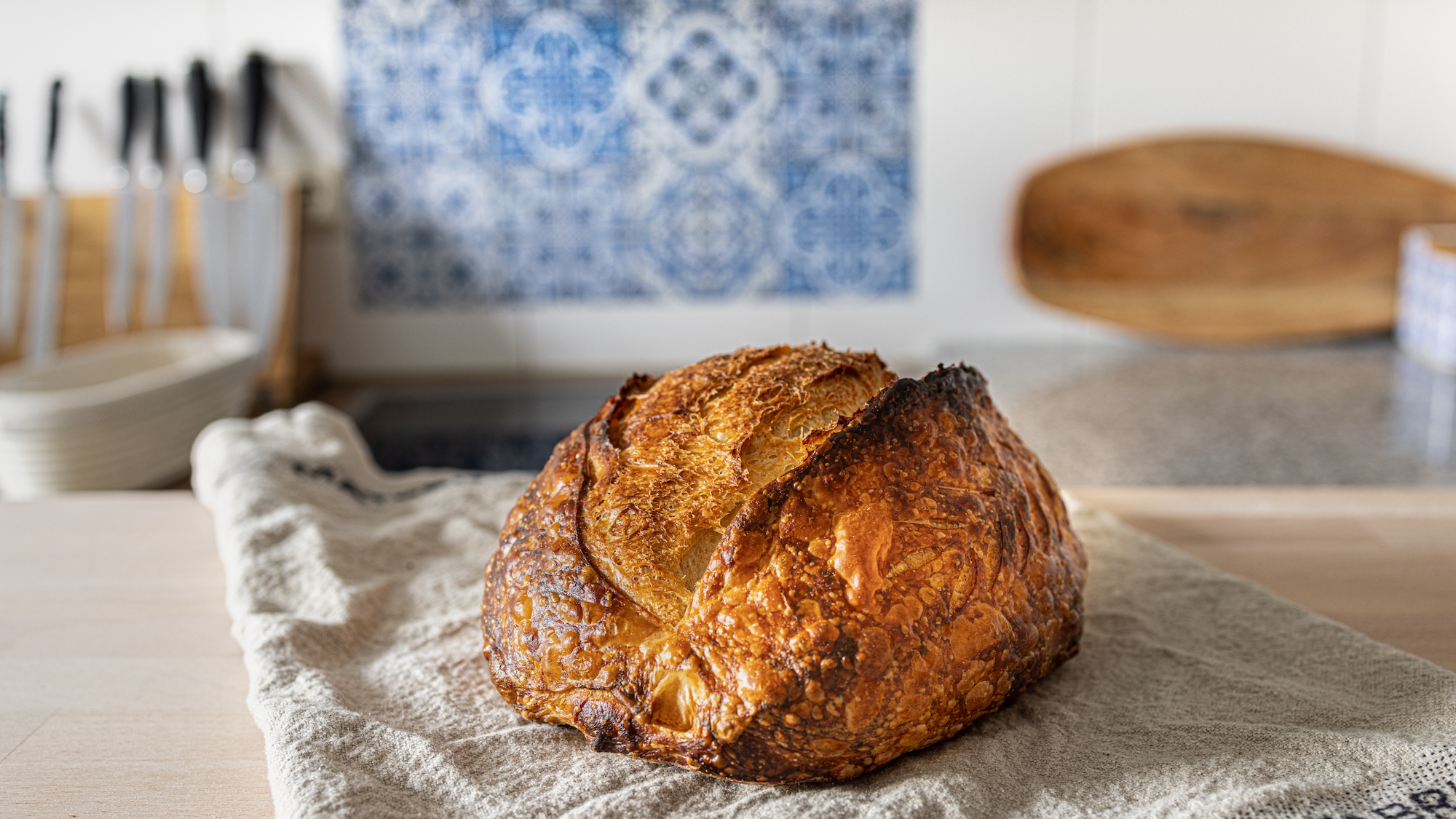
When using wheat, make sure to mix your dough enough to develop a gluten network. Allow the dough to reach a certain size increase during the fermentation. Afterward, divide and pre-shape the dough into the desired visual shape you would like. Each shape requires a different technique. Sometimes achieving the right shape can be challenging. Making a baguette, for instance, requires performing more steps. Mastering this technique takes several attempts.
Once the dough is shaped, it is proofed again for a certain period of time. Once the dough is ready, a sharp tool such as a razor blade is used to make an incision into the dough. This helps control how the dough opens up during the baking process.
All these steps require practice. Each of them has to be performed perfectly, without mistakes. But after baking you will be rewarded with a beautiful bread with great taste and consistency.
There is a dedicated recipe and tutorial for this type of bread in the Wheat sourdough chapter.
1There are some exceptions. In some rare cases your starter might also work at lower temperatures. You might have cultivated microbes that work best at low temperatures. Nevertheless, fermentation is always slower the colder it gets. A fridge really helps to preserve the state of your dough.
2The starter will stay good for months. If you expect to leave it longer, consider drying a little bit of your sourdough starter.
